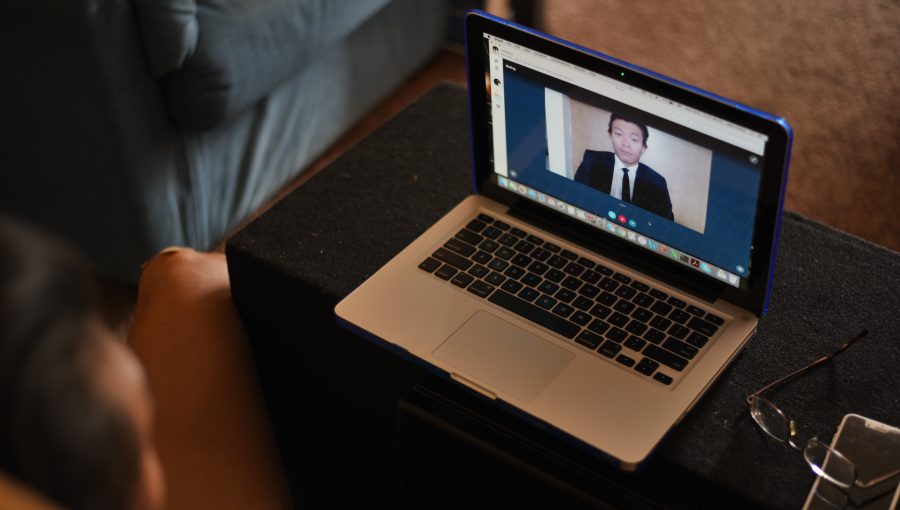“I do think it is very common for employers to use a variety of different forms of technology in their hiring processes,” said Amanda Ingram, assistant director of operations at The University of Alabama Career Center.
One of the most common examples of this is the use of social media in reviewing applicants. While many companies take a person’s online presence as a whole into account, LinkedIn is the most popular platform for social media recruiting. A professional network, LinkedIn provides a space to create a professional profile and connect with future employers.
Students as well as employers can use this to their benefit. Hunter Bonham, a junior majoring in chemical engineering, says he has been contacted by talent search companies looking for potential employees for their clients through LinkedIn. He also uses his account to stay in touch with any connections he’s made.
“What has been most advantageous to me is going to career fairs, interviews, and really any opportunity where you meet potential employers and connecting with them on LinkedIn afterwards, so one – they can put a face and a name in their head when they go home, and two – you’ll be able to contact them whenever you see that they post jobs,” Bonham said.
Ingram said LinkedIn was an important way for students to increase marketability. Besides just having a profile, it’s also beneficial to make connections and interact with other users or interest groups.
“It’s important to make sure that you don’t just have a shell of a LinkedIn profile but really invest time and energy in having a profile that is going to be something interesting to a recruiter,” she said. “I think it’s great for all college students to take the first step of creating that LinkedIn profile, but it’s also important to take the step to actually network using LinkedIn, and that takes a little bit more effort and sometimes a little bit more training.”
In addition to LinkedIn, students should maintain a positive online image throughout all their social media accounts.
“It’s just a very easily accessible world right now,” Ingram said. “It’s important that you’re representing yourself in the way that you would want to represent yourself.”
On a different note, Applicant Tacking Systems are another example of a new technology being utilized in reviewing future employees.
Mary Lowrey, director of Career Education/Development at the UA Career Center, described an ATS as a “software program that helps employers organize their job postings, applications, resumes, etc. Some of these applications include a filter for keywords, skills, particular experience, etc.”
These are more commonly used by larger corporations or recruitment agencies, Lowrey said, since they are able to sort a high volume of applications. Resumes that do well in these systems are simply formatted with a standard font and use key words featuring the applicant’s qualifications and employer’s needs.
Companies are not only using technology for new ways of finding employees, but for interviewing them as well. Skype interviews are an upcoming trend as they can reduce travel expenses and increase convenience for employers.
Joe Topliss, a junior majoring in chemical engineering, was offered an internship with BP after interviewing with them via Skype.
In addition to normal preparations, Topliss had to prepare with his technology.
“For this interview in particular, they had a practice mode where it was essentially just looking at yourself on Skype, and you could record yourself and see what the other people are seeing,” he said.
Topliss ensured that the microphone picked up his voice, the lighting and camera angle were suitable, he was dressed appropriately where the interviews could see him, and his environment would not be disturbed. All of these factors are important in creating a professional image during a virtual interview.
Students should also be prepared for the differences between in-person and virtual interactions.
“The general feel of the interview is different,” Topliss said. “Skype is good, but it chops in and out sometimes, so a lot of the times you’re just focused on what they’re saying. Another thing is it’s just not as fluid. Little nonverbal cues are lost sometimes. That can be challenging in an interview.”
In addition to interviews, career fairs are also going virtual. Virtual career fairs offer students the chance to chat and video chat with employers. The employers can give information sessions, send recruiters, or both.
“Virtual career fairs is another thing we’re seeing more of,” Ingram said. “It’s really the same kind of interaction you would have in a career fair environment, but it’s just going to be done typing instead of talking. It is a really good way to meet some companies that maybe don’t come here specifically to The University of Alabama.”
When navigating these new technologies, the UA Career Center is a great resource for students. Mock Skype interviews are available on Crimson Careers, and career consultants can help create LinkedIn accounts and resumes.
Technology continues to have an effect on many aspects of life, including the hiring process. From utilizing social media to interviewing through a screen, companies are finding more and more ways to reach out to potential hires.









